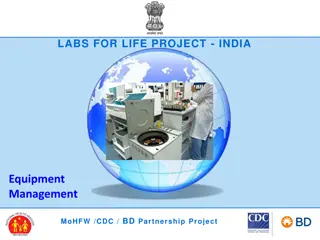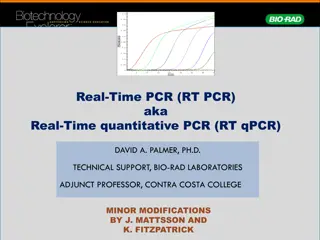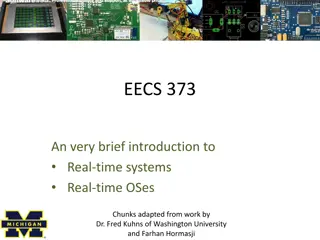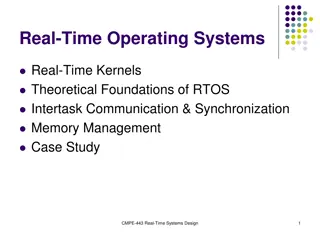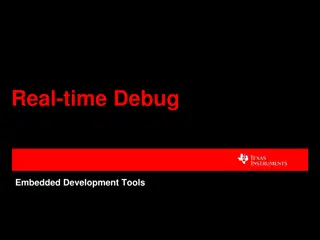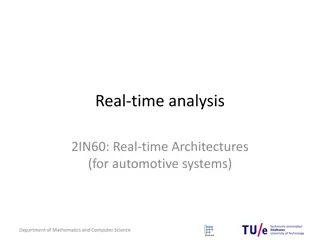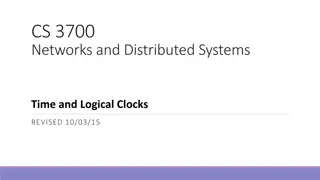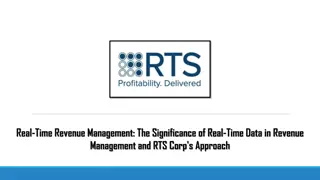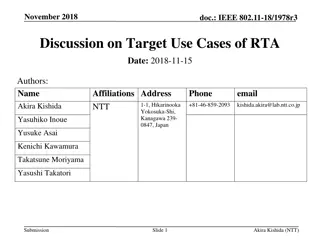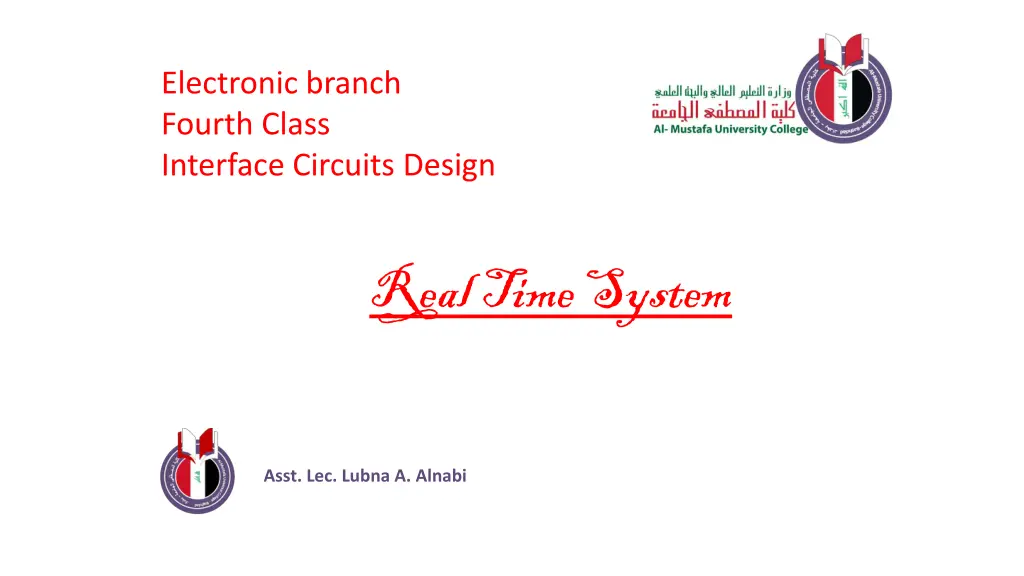
Understanding Real-Time Systems and Signal Data Processing
Explore the world of real-time systems, terms associated with RTS, types of RTS, comparison between hard and soft systems, analog vs. digital data, and more. Learn about the importance of timely data processing and the differences between analog and digital signals in electronics engineering.
Download Presentation

Please find below an Image/Link to download the presentation.
The content on the website is provided AS IS for your information and personal use only. It may not be sold, licensed, or shared on other websites without obtaining consent from the author. If you encounter any issues during the download, it is possible that the publisher has removed the file from their server.
You are allowed to download the files provided on this website for personal or commercial use, subject to the condition that they are used lawfully. All files are the property of their respective owners.
The content on the website is provided AS IS for your information and personal use only. It may not be sold, licensed, or shared on other websites without obtaining consent from the author.
E N D
Presentation Transcript
Electronic branch Fourth Class Interface Circuits Design Real Time System Asst. Lec. Lubna A. Alnabi
Real Time System It is one in which the correctness of the system depends not only on the logical result of computation, but also on the time which the results are generated. A real-time system is one whose logical correctness is based on both the correctness of the outputs and their timeliness. A system is a mapping of a set of inputs into a set of outputs.
Terms Associated with RTS Terms Associated with RTS Tasks Periodic Time-driven. Characteristics are known a priori. E.g.: Task monitoring temperature of a patient in an ICU. Aperiodic Event-driven. Characteristics are not known a priori. E.g.: Task activated upon detecting change in patient s condition. Release time of a job: the time instant the task becomes ready to execute. Deadline of a job: the time instant by which the task must complete execution. Relative deadline of a job: Deadline - Release time. Response time of a job: Completion time - Release time.
Types of RTS Types of RTS Soft System Hard System Firm System
Data and Signal Data and Signal Data information formatted in human/machine readable form. Signal electric or electromagnetic representation of data.
Data and Signal Data and Signal
Analog vs. Digital Data Analog vs. Digital Data Analog data representation variable takes on continuous values, e.g. voice, temperature, etc. Digital data representation variable takes on discrete values, e.g. text, digitized images, etc. Analog signal signal that is continuous in time and can provide an infinite number of values in a given range (continuous in time and value).
Analog vs. Digital Data Analog vs. Digital Data
Periodic Signals Periodic Signals
Aperiodic Signals Aperiodic Signals
Sensors and Transducers Sensors and Transducers A sensor is a device that detects and responds to some type of input from the physical environment.
What are some quantities that can be sensed? What are some quantities that can be sensed? Motion, position, displacement. Velocity and acceleration. Force, strain. Pressure. Flow. Sound. Moisture. Light. Radiation. Temperature. Chemical presence.
A transducer A transducer A transducer is a device that converts one form of energy to another
Block Diagram of Transducers Block Diagram of Transducers
Classification of transducers Classification of transducers 1.Based on principle of transduction. Thermo electric. Magneto resistive. Electro kinetic . Optical. 2. Active & passive. 3. Analog & digital. 4. Inverse transducer.
Comparison between active and passive Comparison between active and passive transducer transducer Passive Transducers: These transducers need external source of power for their operation. So they are not self-generating type transducers. A DC power supply or an audio frequency generator is used as an external power source. These transducers produce the output signal in the form of variation in resistance, capacitance, inductance or some other electrical parameter in response to the quantity to be measured. E.g. Resistive, inductive, capacitive without power they will not work. Active transducers: These transducers do not need any external source of power for their operation. Therefore they are also called as self- generating type transducers. The active transducers are self-generating devices which operate under the energy conversion principle. As the output of active transducers we get an equivalent electrical output signal e.g. temperature or strain to electric potential, without any external source of energy being used. E.g. Piezoelectric used for acceleration measurement.





